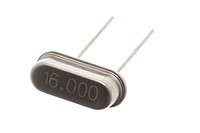
Photo from wikipedia
Interface traps between a gate insulator and beta-gallium oxide (β-Ga2O3) channel are extensively studied because of the interface trap charge-induced instability and hysteresis. In this work, their effects on mobility… Click to show full abstract
Interface traps between a gate insulator and beta-gallium oxide (β-Ga2O3) channel are extensively studied because of the interface trap charge-induced instability and hysteresis. In this work, their effects on mobility degradation at low temperature and hysteresis at high temperature are investigated by characterizing electrical properties of the device in a temperature range of 20–300 K. As acceptor-like traps at the interface are frozen below 230 K, the hysteresis becomes negligible but simultaneously the channel mobility significantly degrades because the inactive neutral traps allow additional collisions of electrons at the interface. This is confirmed by the fact that a gate bias adversely affects the channel mobility. An activation energy of such traps is estimated as 170 meV. The activated trap charges’ trapping and de-trapping processes in response to the gate pulse bias reveal that the time constants for the slow and fast processes decrease due to additionally activated traps as the temperature increases.
Journal Title: Nanomaterials
Year Published: 2021
Link to full text (if available)
Share on Social Media: Sign Up to like & get
recommendations!